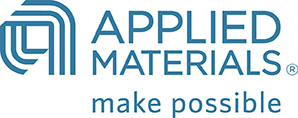Applied Materials Demonstrates Next-Generation Interconnect Solutions for Breaking the Gigahertz/Gigabit Barrier
Equipment Set Solutions for Aluminum, Copper and Low k Enable
Extension of Moore's Law
Applied Materials, Inc. today announced at the Semicon West 98 trade show that the company has demonstrated a full range of processes and solutions that will enable chipmakers to build interconnect structures for all types of semiconductors. These interconnects range from aluminum-based designs to the copper and low dielectric constant (low k) designs that will all be part of tomorrow's gigahertz and gigabit device generations.
The interconnect is the key structure in advanced chip designs. New interconnect materials and fabrication strategies will enable products such as embedded designs, systems-on-a-chip, high-density memories and ultra-high speed microprocessors. For the consumer, increased chip performance will mean high resolution displays with 3-D imaging for business and entertainment, real-time video conferencing and a host of other emerging applications, including graphics-intensive internet communications.
"Moore's Law for microelectronic chips has driven the growth of the trillion dollar global electronics industry," noted Dr. Ashok Sinha, president of Applied Materials' Metal Deposition Product Business Group. "Applied Materials has a comprehensive and powerful approach to next-generation interconnect technology that is aimed at continuing Moore's Law by enabling the cost-effective production of gigahertz-speed microprocessors and gigabit-density DRAMs. Our Total Solutions(tm) program brings to customers its most advanced deposition, etch, chemical mechanical planarization (CMP), thermal processing and inspection technologies -- integrated and optimized into high-performance process sequences for creating the entire interconnect structure of an integrated circuit."
For gigahertz/gigabit generation devices, semiconductor manufacturers are considering several interconnect fabrication strategies, including single damascene, dual damascene and conventional "plug and pattern" designs. Each of these different design schemes requires fundamental changes in materials and processing techniques.
"Applied Materials has an equipment set solution for any combination of aluminum, copper and low (k) dielectrics that our customers wish to use. We've already demonstrated process results using these solutions for the complete range of interconnect structure design schemes being considered for giga-generation devices. By integrating and optimizing all parts of the process flow, we give customers many process options that can potentially save them considerable time in process development, system qualification and, ultimately, time-to-market," Sinha said.
Applied Materials' PVD (physical vapor deposition) products for both aluminum and copper-based device designs are being used by virtually every major semiconductor manufacturer worldwide. For example, the Endura(R) Electra Cu(tm) system was the first product in the market for depositing critical tantalum-based barrier and copper seed layers to enable copper interconnects. The Endura Electra Cu technology is currently being used by more than a dozen chipmakers. Applied Materials also has successfully demonstrated several alternatives for copper bulk fill, including electroplating and dry fill CVD/PVD technologies. A versatile copper chemical mechanical planarization (CMP) process has also been demonstrated on Applied Materials' Mirra(R) CMP system for post-deposition polishing.
Low k dielectric films, which complement copper film in enabling advanced chip designs, have also been demonstrated by Applied Materials. These low k films include fluorinated silicate glass (FSG) using the Ultima HDP-CVD Centura(R) and a silicon-based "Black Diamond" technology. Both dielectric and copper metal etching technologies are being evaluated for various interconnect designs. The Dielectric Etch IPS(tm) Centura has shown excellent results in the difficult applications required for dual damascene etching, both with SiO2 and low k films. A remarkable copper etch technology has also been demonstrated using the Metal Etch DPS(tm) Centura system for potential use in conventional "plug and pattern" interconnect architectures.
For more information on Applied Materials' full range of processes and solutions for the gigahertz/gigabit device generations, visit the company's web site at http://www.AppliedMaterials.com. Applied Materials will also be exhibiting its Total Solutions interconnect approach at Semicon West 98 in San Francisco, Calif., on July 13-15 in Booth No. 1026.
Applied Materials, Inc. is a Fortune 500 global growth company and the world's largest supplier of wafer fabrication systems and services to the global semiconductor industry. Applied Materials is traded on the Nasdaq National Market System under the symbol "AMAT."
